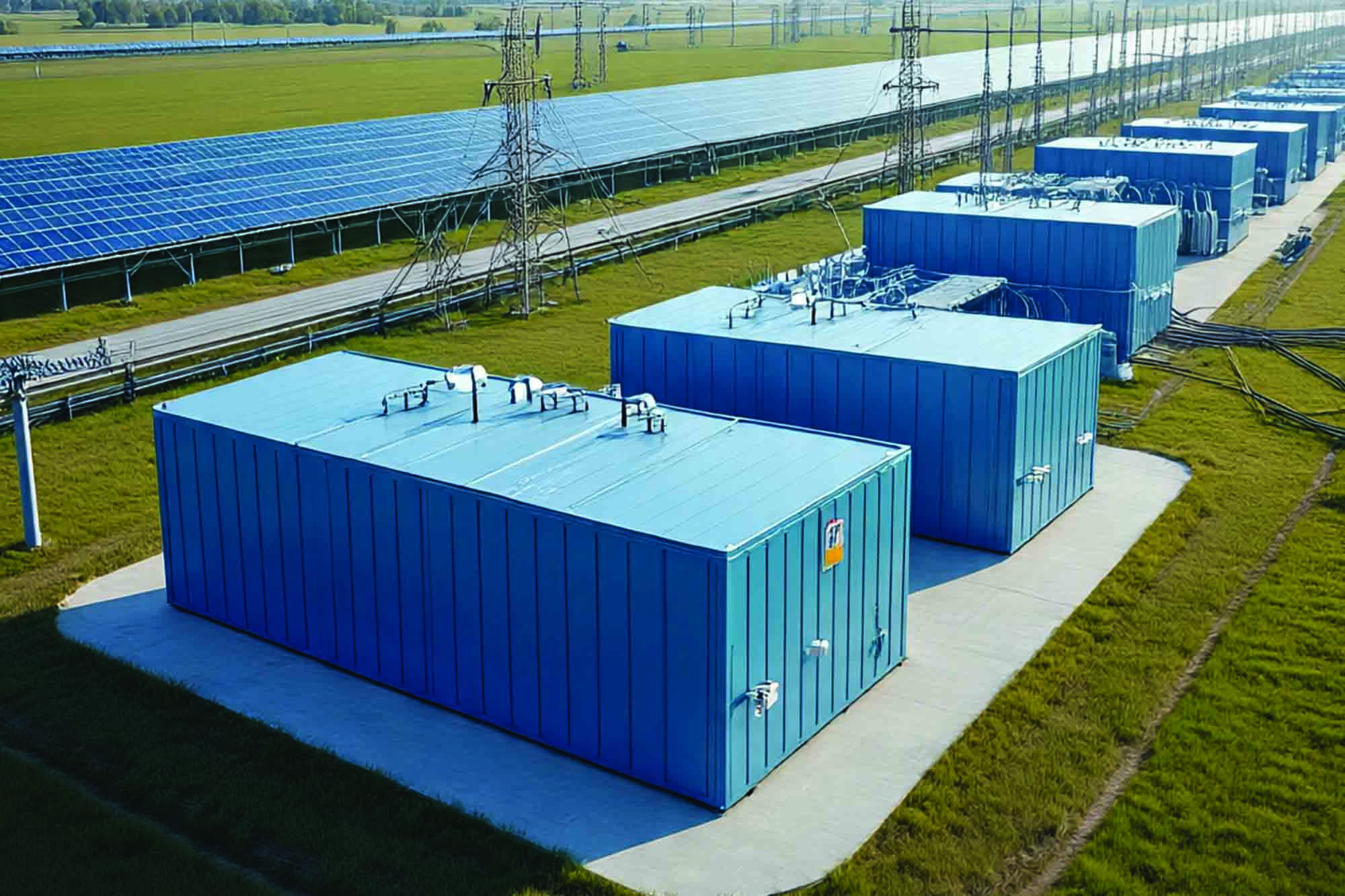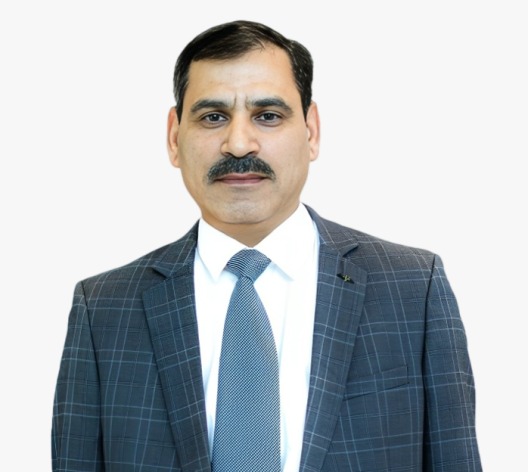Grid evolution demands better storage ideas
By Staff Report July 25, 2025 5:34 pm IST
By Staff Report July 25, 2025 5:34 pm IST

Energy storage infrastructure challenges are expected to increase as modular Battery Energy Storage Systems (BESS) become a core component of grid flexibility.
Quotes:

Rajesh Kaushal, Energy Infrastructure & Industrial Solutions (EIS) Business Group Head, India & SAARC- Delta Electronics India
“We are addressing integration complexity through end-to-end storage solutions that combine power electronics, BMS, and real-time control software to ensure seamless grid interaction.”
—

Milind Solanki, Vice President- EY
“Utility companies are utilising AI and Generative AI (GenAI) for outage prediction, asset health diagnostics and load forecasting… These systems can help in fault isolation, real-time interpretation of SCADA logs, and simulation of power flows and line congestion scenarios.”
—

Vishal Sharma, Business Manager, Energy- WAGO India
“Our cloud solution, SCADA, power plant controllers and DER controllers will significantly enhance network communication between transmission and distribution systems.”
—————————————
The Indian energy sector is at a crucial juncture, showcasing remarkable progress while preparing for future challenges. In FY 2024–25, the country reached a record peak power demand of 250 GW and reduced energy shortages to just 0.1 per cent, marking a historic milestone in power generation, transmission, and distribution (T&D). This achievement reflects the effectiveness of national grid management and the increasing efficiency of energy infrastructure.
However, power demand is rising rapidly due to urbanisation, industrialisation, and climate-induced stress, such as prolonged heatwaves. By FY 2031–32, the peak power demand is projected to soar to 388 GW. Despite current gains, we are likely to face power shortages by 2027 if infrastructure upgrades lag behind demand. In response, the country is accelerating the deployment of smart grid systems and modern transmission and distribution (T&D) technologies to improve load balancing while integrating distributed generation and minimising transmission losses.
Simultaneously, renewable energy sources, particularly solar and wind energy, are experiencing strong growth. As a result, this helps reduce dependency on fossil fuels. As we move toward the government’s renewable energy targets, this growth is expected to peak within the next five years. However, the intermittent nature of renewables poses challenges to grid stability, which intensifies the need for robust energy storage solutions.
Energy storage is evolving from a value-added feature to an operational necessity for a resilient and future-ready grid. Battery energy storage systems (BESS), pumped hydro and hybrid energy models are now essential for maintaining grid flexibility. This manages peak loads and ensures continuous power availability around the clock in the era of the clean energy transition.
Sector experts weigh in to analyse the current scenario and future expectations, providing a clear vision of the power landscape shift in India. Let us explore here for better understanding.
National unified network management system (N-UNMS)
The National Unified Network Management System (N-UNMS) is a centralised digital platform designed to monitor, manage, and optimise the national power transmission grid in real-time. Developed by Power Grid Corporation of India Ltd. (PGCIL), N-UNMS integrates over 1,500 substations across the country under a single control architecture, aiming to enhance grid visibility, reliability, and operational efficiency. By leveraging AI, IoT, and data analytics, it can detect faults, forecast demand, and facilitate swift decision-making. By unifying regional and state networks, N-UNMS plays a crucial role in supporting India’s growing renewable energy capacity, ensuring a stable, secure, and smart power ecosystem.
Rajesh Kaushal from Delta states that this initiative aligns perfectly with smart infrastructure development. The system’s grid automation and SCADA-integrated control solutions are designed to seamlessly interface with national platforms providing robust intelligence and cyber-secure interoperability.
“As India moves towards a ‘One Nation, One Grid’ model, N-UNMS will serve as a foundational enabler for grid resilience, flexible dispatch and integration. By combining advanced analytics, digital twins and substation digitisation, manufacturers can complement evolution with next-gen T&D solutions that support N-UNMS deployment and real-time optimisation of the national grid,” Rajesh opines.
However, expressing his views, Vishal Sharma from WAGO India shares that centralised N-UNMS can develop real-time data analysis between central and regional grids on a single platform. He says, “It will help with automated fault detection and reduce energy losses in transmission, providing overall grid stability and is predicted to decrease grid downtime by 15 to 20 percent.”Energy storage system and its challenges
Renewable energy generation in India is growing with a focus on solar and wind power. It reduces the burden on conventional power generation, providing load balance with grid stability. Renewable energy generation is expected to reach its peak within the next five years potentially surpassing traditional power sources such as thermal and hydroelectric. Hence, there is a need for the development and expansion of energy storage infrastructure. With the government’s push for Battery Energy Storage Systems (BESS) and the renewable energy dependency on weather conditions energy storage systems have become a more crucial and mandatory requirement.
Storage as not just a backup but a core component of grid flexibility. Modular Battery Energy Storage Systems (BESS) integrate seamlessly with renewable energy that enables load shifting, black start capabilities and support for ancillary services. Rajesh Kaushal states that with the growing decentralisation, ESS technologies are being deployed in hybrid microgrids, utility substations, and solar-plus-storage applications across India. “These systems are essential for minimising curtailments, enhancing power quality and optimising dispatch efficiency,” he states.
To increase power capacity, companies should invest in lithium-ion and next-generation chemistries, along with intelligent Battery Management Systems (BMS), to ensure safety, lifecycle optimisation, and data transparency. “To achieve the target of 500 GW of non-fossil energy capacity by 2030, energy storage will be the linchpin. Manufacturers should prepare to scale up their infrastructure with global expertise and local implementation,” Rajesh emphasises.
The integration of decarbonisation, digitalisation, and decentralisation is transforming the role of T&D infrastructure from passive conduits to active enablers of the energy transition. This makes these emerging technologies essential for sustainable, reliable and resilient energy systems. The integration of energy storage into renewable-heavy grid presents high upfront costs and regulatory ambiguity. The interoperability issues, limited incentives for ancillary services, inadequate transmission infrastructure and intermittency of renewable sources remain a concern.
Despite these challenges, integration of Battery Energy Storage Systems (BESS) presents significant opportunities by enhancing grid reliability, mitigating fluctuations and reducing dependence on fossil fuels. However, the opportunities far outweigh the hurdles. As grid flexibility becomes mission-critical, storage can serve as a dispatchable asset that enables time-shifting of renewables, deferring infrastructure investments and stabilising voltage and frequency.
Vishal Sharma expresses, “Indian future power transmission landscape is expected to rely on HVDC, especially with the renewable energy emphasis heavily. The National Electricity Plan predicts 15,432 km of HVDC-based transmission lines and 32,250 MW of transfer capacity.”
In India’s distributed energy future, integrating storage with renewable power and smart controls will unlock value for DISCOMs, IPPs and consumers alike. Delta is collaborating with stakeholders to bring effective storage models and reduce overall ownership costs through local manufacturing, modular designs, and predictive maintenance capabilities.
Rajesh Kaushal states, “We are addressing integration complexity through end-to-end storage solutions that combine power electronics, BMS, and real-time control software to ensure seamless grid interaction. Our systems are built to scale from kWh-level community storage to MWh-level utility applications and support grid-connected and islanded modes.”
Smart grid and T&D solutions
To meet 388 GW power demand by FY32, capacity augmentation and advanced infrastructure are much needed. Transmission and distribution manufacturers are transitioning to a smart grid portfolio which includes advanced metering infrastructure (AMI), demand response systems, substation automation and energy storage integration.
India has achieved 50 per cent of its installed electricity capacity from non-fossil sources by July 2025, ahead of its 2030 target. This milestone, driven by solar, wind, hydro, and nuclear power, demands that the country’s T&D system remain well-prepared to manage intermittent generation, grid imbalances, and regional variability in supply and demand.
Grid solutions facilitate utilities in enhancing system reliability and managing peak loads. This ensures secure energy delivery through real-time data visibility and predictive analytics as renewable penetration deepens. Intelligent energy management systems and IoT-based distribution automation tools balance variability and ensure load stability. Grid automation products and energy monitoring solutions significantly contribute to technological and development solutions.
The tech companies are well-prepared for smart solutions to the evolving grid. Vishal Sharma emphasises, “We are well-positioned in the energy sector with our telecontrol technology products including RTU & FRTU for energy distribution, communication and protection of electrical distribution systems. WAGO’s cloud solution, SCADA, power plant controllers and DER controllers will significantly enhance network communication between transmission and distribution systems.”
Meanwhile, Milind Solanki from EY shares that the International Energy Agency (IEA) predicts that by 2040, the entire global grid will require over 80 million km of power lines to be built or refurbished. Annual grid investments must nearly double to over $600 billion by 2030 to stay on track for net-zero goals. Without urgent upgrades, a substantial amount of renewable capacity currently in permitting may never connect to the grid.
AI and GenAI in grid operations
AI and Generative AI (GenAI) are playing a catalytic role in power grid operations by enhancing reliability, efficiency, and decision-making. AI-driven predictive maintenance enables utilities to detect faults in transmission lines and substations before failures occur, thereby simultaneously reducing downtime. GenAI supports real-time grid simulations, automates report generation and optimises load forecasting by analysing vast historical and real-time data. These technologies enable grid operators to manage renewable energy variability, demand response, and grid congestion.
The utility companies are increasingly utilising AI and Generative AI (GenAI) for outage prediction, asset health diagnostics and load forecasting. The trend is shifting towards agentic AI systems, which can autonomously make decisions. These systems can aid in fault isolation, real-time interpretation of SCADA logs, and simulation of power flow and line congestion scenarios. This reduces human workload and facilitates faster and safer grid decisions.
The experts’ views echo the analysis that India’s power sector stands at the cusp of a technological and structural change. The integration of smart grids, advanced transmission and distribution (T&D) infrastructure, and scalable energy storage systems is expected to play a crucial role in making the energy system future-ready. To keep grid operations robust, technologies like AI and GenAI are a must to adopt. In the wake of meeting the targets, investment is necessary, without which the upgrades are not possible.
We use cookies to personalize your experience. By continuing to visit this website you agree to our Terms & Conditions, Privacy Policy and Cookie Policy.